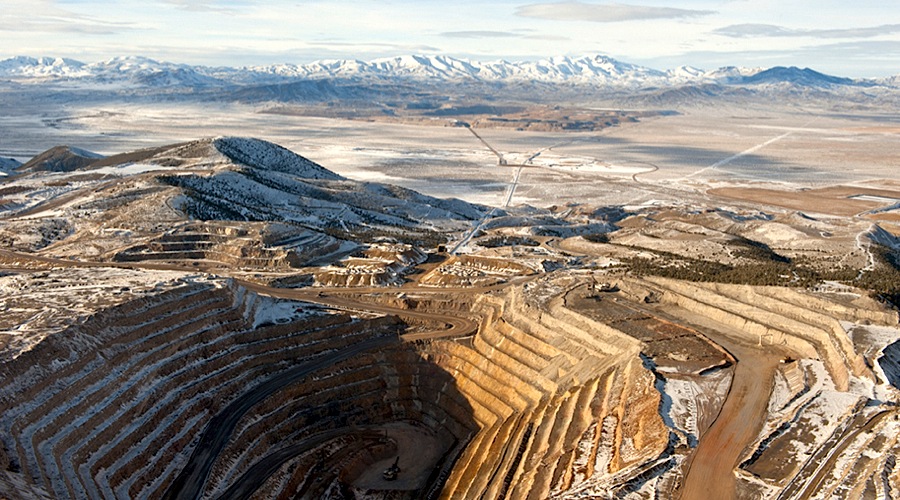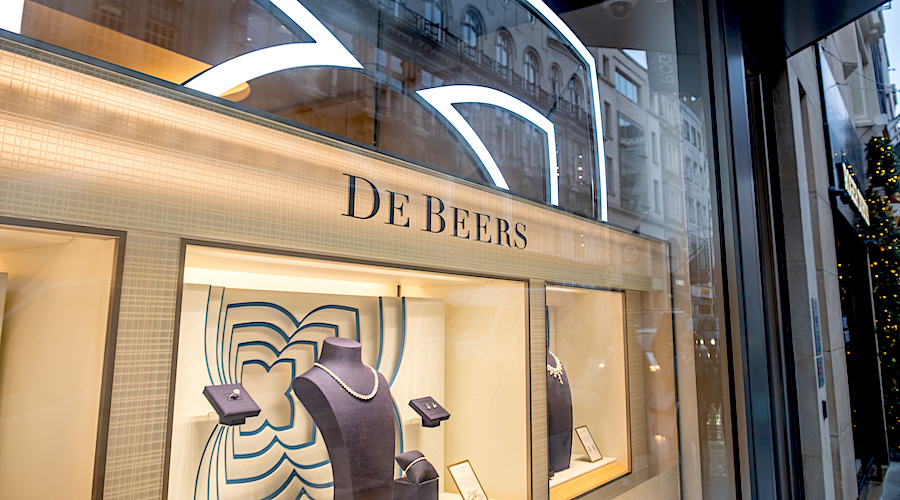Top 10 US-based miners

The Northern Miner presents the top 10 U.S.-based mining companies by market capitalization.
1. Newmont Goldcorp
Market cap: $31.8 billion

Newmont Goldcorp (NYSE: NEM) is a leading gold and copper producer with operations in the U.S., Australia, Ghana, Peru and Suriname. Earlier this year, Barrick struck a joint venture with Newmont Goldcorp, called Nevada Gold Mines, which will have three tier-one gold mines: Barrick’s Cortez; the combination of Barrick’s Goldstrike and Newmont’s Carlin; and Barrick’s Turquoise Ridge, with Newmont’s Twin Creeks. The joint-venture operations making up Nevada Gold Mines — owned 61.5% by Barrick and 38.5% by Newmont Goldcorp — produced more than 4 million oz. gold in 2018.
In November 2018, Newmont declared commercial production at the Subika underground project in Ghana, which represented Newmont’s third profitable expansion last year. The company’s consolidated gold production in 2018 totalled 5.48 million ounces. The attributable gold production outlook for 2019 is 5.2 million oz. gold at all-in sustaining costs of $935 per oz. gold.
Tom Palmer will take over the reins as Newmont Goldcorp’s president and CEO on Oct. 1, replacing Gary Goldberg, who is retiring.
2. Southern Copper
Market cap: $25.6 billion

Southern Copper (NYSE: SCCO) is one of the largest integrated copper producers in the world, with a copper reserve totalling 70.6 million tonnes. The company was incorporated in Delaware in 1952, and is listed on the New York and Lima Stock Exchanges. The company operates in Mexico and Peru, and has exploration projects in Argentina, Chile, Ecuador, Mexico and Peru.
Southern Copper produced 883,689 tonnes copper, 70,778 tonnes zinc and 17.3 million oz. silver in 2018, compared to 876,979 tonnes copper, 68,665 tonnes zinc and 15.9 million oz. silver in 2017. For 2019, the company expects to produce 986,700 tonnes copper, 96,400 tonnes zinc and 21.4 million oz. silver.
In February 2018, the company won the public bidding process for the Michiquillay project in Cajamarca, Peru, with mineral resources of 1.15 billion tonnes and a 0.63% copper grade. The Michiquillay project is expected to produce 225,000 tonnes copper a year, along with by-products molybdenum, gold and silver, for an initial mine life exceeding 25 years. Michiquillay will start production in 2025 to become one of the largest copper mines in Peru.
3. Freeport-McMoRan
Market cap: $15 billion

Phoenix-headquartered Freeport-McMoRan (NYSE: FTX) operates seven open-pit copper mines in North America (Morenci, Bagdad, Safford, Sierrita and Miami in Arizona, and Chino and Tyrone in New Mexico) and two copper mines in South America (Cerro Verde in Peru, and El Abra in Chile).
In 2018, Freeport produced 3.8 billion lb. copper at an average realized price of $2.91 per lb., and 2.4 million oz. gold at $1,254 per ounce. The company has estimated consolidated recoverable proven and probable mineral reserves of 119.6 billion lb. copper, 30.8 million oz. gold, 3.78 billion lb. molybdenum and 393.1 million oz. silver.
In May 2019, Freeport announced the sale of its cobalt refinery — in Kokkola, Finland — and related cobalt cathode business to Umicore for $150 million. Production at the Lone Star copper-leach project in Arizona, which Freeport started developing in 2018, should begin by the end of 2020. In December 2018, the Indonesian government took a 51.2% stake in Freeport’s Grasberg mine in Papua province, Indonesia, in a $3.85 billion deal.
4. FMC
Market cap: $11.7 billion
FMC (NYSE: FMC), a chemical company headquartered in Philadelphia, Pa., serves the global agricultural, consumer and industrial markets. The company has two business segments: FMC Agricultural Solutions and FMC Lithium. The former offers crop-protection chemicals to enhance crop yield and control pests in non-agricultural markets, while the lithium segment makes lithium for use in products relating to energy storage, specialty polymers and chemical synthesis applications.
In June 2019, FMC announced plans to invest more than $50 million over the next three years in capital-improvement projects, including the reconfiguration of a greenhouse and research facility at the company’s global research and development headquarters in Newark, Delaware.
5. Mosaic
Market cap: $9.1 billion

Mosaic (NYSE: MOS) is the world’s leading producer and marketer of concentrated phosphate and potash. The Fortune 500 company, headquartered in Plymouth, Minn., has been publicly traded since 2004. Mosaic’s principal phosphate-production facilities are in Florida and Louisiana, while its potash-production facilities are in New Mexico, Saskatchewan and Canada.
In 2018, Mosaic sold 8.8 million tonnes potash and 8.4 million tonnes phosphate. This year’s potash sales are expected to range from 9 million to 9.4 million tonnes, and 8.6 million to 9 million tonnes for phosphates.
In the second quarter of 2019, Mosaic reported a net loss of $233 million, including a $284-million, non-cash, after-tax charge for the permanent closure of its Plant City phosphate facility in Hillsborough County, Fla., in June 2019.
6. Albemarle
Market cap: $8.4 billion

Albemarle (NYSE: ALB) is a global specialty chemicals company in lithium, bromine and refining catalysts, serving markets that include energy storage, petroleum refining, consumer electronics, construction, automotive, lubricants, pharmaceuticals, crop protection and custom chemistry services.
In December 2018, Albemarle entered a definitive agreement to acquire a 50% interest in Mineral Resources Ltd.’s Wodgina project in the Pilbara region of Western Australia for $1.2 billion. The joint venture will produce spodumene concentrate and battery-grade lithium hydroxide.
In July 2019, Albemarle raised its stake in the Wodgina hard rock lithium project to 60%, and formed a 60/40 joint venture with Mineral Resources to operate the mine and battery-grade lithium hydroxide production facilities.
Net income attributable to Albemarle for 2018 was $693.6 million, or $6.40 earnings per share, compared to $54.9 million, or 49¢ per share in 2017.
7. Royal Gold
Market cap: $8.9 billion
Royal Gold (NASDAQ: RGLD) acquires and manages precious metals stream and royalty interests, with a focus on gold. The Denver, Colo.-based company owns interests in 186 properties on five continents, including 41 producing mines and 15 development-stage projects. Three-quarters of Royal Gold’s fiscal 2018 revenue came from its principal producing properties, which include Mount Milligan in Canada, Pueblo Viejo in the Dominican Republic, Andacollo in Chile, Wassa and Prestea in Ghana, Penasquito in Mexico, and Cortez in the United States.
In February 2019, Royal Gold acquired a silver stream on the Khoemacau copper project in Botswana, which has a 21-year initial mine life. Khoemacau is fully funded, and production and stream deliveries are expected in the first half of 2021.
8. Alcoa
Market cap: $3.7 billion

Alcoa (NYSE: AA) is a global industry leader in bauxite, alumina and aluminum products. Alcoa is among the world’s largest bauxite producers, with seven bauxite mines, including the world’s second-largest: Huntly, in Australia. It is also the world’s leading producer of alumina, and operates six refineries in Australia, Brazil and Spain. Its three-refinery operation in Western Australia is the world’s biggest single source of alumina.
In 2018, the company produced 45.8 million tonnes bauxite, 12.9 million tonnes alumina and 2.3 million tonnes primary aluminum in 2018. This year, the company expects to ship between 47 million and 48 million dry tonnes bauxite, between 13.6 million and 13.7 million tonnes alumina, and between 2.8 million and 2.9 million tonnes aluminum.
9. Cleveland-Cliffs
Market cap: $2.5 billion
Headquartered in Cleveland, Ohio, Cleveland-Cliffs (NYSE: CLF) is the largest and oldest independent iron ore mining company in the United States. Its mines and pellet plants in Michigan and Minnesota are major suppliers of iron ore pellets to the North American steel industry.

In June 2019, Cleveland-Cliffs completed a $100 million expansion of Northshore Mining, a company that mines iron ore near Babbitt, Minn., and moves the ore by rail to a processing plant on the north shore of Lake Superior in Silver Bay.
By 2020, Cleveland-Cliffs could become the sole producer of hot-briquetted iron in the Great Lakes region, with the development of its first production plant in Toledo, Ohio, which started construction in April 2018. The Toledo plant will produce 1.9 million tonnes per year of customized, high-quality, hot-briquetted iron.
10. Peabody Energy
Market cap: $1.8 billion

Peabody Energy (NYSE: BTU) is the largest private-sector coal company in the world. Its primary business lies in mining, selling and distributing coal for use in electricity generation and steelmaking. The company, headquartered in St. Louis, Mo., has majority interests in 22 of the 23 coal-mining operations in the U.S. and Australia, and a 50% equity interest in Middlemount Coal Pty Ltd., which owns the Middlemount mine in Queensland, Australia.
In June, Peabody and Arch Coal entered an agreement to combine their Powder River basin and Colorado assets into a joint venture, which the companies estimate will unlock synergies of $120 million a year in the first 10 years. Peabody will be the operator and own 65% of the joint venture, and Arch will own the other 33.5%.
In December 2018, Peabody acquired the Shoal Creek seaborne metallurgical coal mine in Alabama from private coal producer Drummond Co. Inc. for $387 million. Shoal Creek is expected to ship 2.5 million tonnes of high-quality, hard-coking coal to Asian and Atlantic steel customers in 2019. The company announced on Aug. 9, 2019 that it would close the Somerville mining complex in Indiana, U.S., in October. The mine, which opened in 2000 and supplied 2 million tonnes coal in 2018, has been facing a tough economic climate.
More News
Anglo starts talks with banks on possible De Beers IPO
Anglo is pursuing a dual-track process in its effort to exit De Beers by trying to find a buyer for the struggling business.
March 28, 2025 | 12:19 pm
PDAC JV video: Golden Pursuit preps for discovery at sub-Arctic Gordon Lake, CEO says
A program to scan archived core using AI and expand geophysical surveys on the Wooferine-Lynk Zones is set to start soon.
March 28, 2025 | 11:35 am
{{ commodity.name }}
{{ post.title }}
{{ post.excerpt }}
{{ post.date }}



Comments